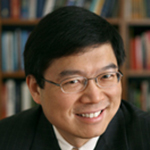Lihong Wang, PhD, the Gene K. Beare Distinguished Professor of Biomedical Engineering in the School of Engineering & Applied Science at Washington University in St. Louis, has received a prestigious BRAIN Initiative Award from the National Institutes of Health (NIH).

Wang’s three-year, $2.7 million award, is one of 58 grants totaling $46 million announced Sept. 30 by Francis S. Collins, MD, PhD, director of the NIH, in Washington, D.C.
The award is part of the Brain Research through Advancing Innovative Neurotechnologies (BRAIN) Initiative, a national research effort launched by President Barack Obama last year to revolutionize the understanding of the human mind and uncover new ways to treat, prevent and cure brain disorders such as Alzheimer’s disease, schizophrenia, autism, epilepsy and traumatic brain injury.
With the new grants, more than 100 investigators in 15 states and several countries will work to develop new tools and technologies to understand neural circuit function and capture a dynamic view of the brain in action. These new tools and this deeper understanding will ultimately catalyze new treatments and cures for devastating brain disorders and diseases that are estimated by the World Health Organization to affect more than 1 billion people worldwide.
“The human brain is the most complicated biological structure in the known universe,” Collins said. “We’ve only just scratched the surface in understanding how it works — or, unfortunately, doesn’t quite work when disorders and disease occur.
“There’s a big gap between what we want to do in brain research and the technologies available to make exploration possible. These initial awards are part of a 12-year scientific plan focused on developing the tools and technologies needed to make the next leap in understanding the brain,” he said.
Wang’s grant will fund his research to develop a high-speed, high-spatial resolution, deep-penetration photoacoustic computed tomography (PACT) system for real-time imaging of action potentials, or spikes in electrical activity, in mouse brains. He plans to develop an unprecedented hardware imaging system that will provide deeper penetration than existing imaging protocols for whole mouse brain imaging.
Other projects include creating a wearable scanner to image the human brain in motion, using lasers to guide nerve cell firing, recording the entire nervous system in action, stimulating specific circuits with radio waves and identifying complex circuits with DNA barcodes. The majority of the grants focus on developing transformative technologies that will accelerate fundamental neuroscience research and include:
- classifying the myriad cell types in the brain
- producing tools and techniques for analyzing brain cells and circuits
- creating next-generation human brain imaging technology
- developing methods for large-scale recordings of brain activity
- integrating experiments with theories and models to understand the functions of specific brain circuits.
The grant is the latest in Wang’s arsenal of funding – he is or has been principal investigator on 37 research grants with a cumulative budget of $47 million.
He has received the NIH FIRST and the NIH Director’s Pioneer awards, as well as the National Science Foundation CAREER Award. He was awarded The Optical Society (OSA) C.E.K. Mees Medal, the Institute of Electrical and Electronics Engineers (IEEE) Technical Achievement Award and the IEEE Biomedical Engineering Award for “seminal contributions to photoacoustic tomography and Monte Carlo modeling of photon transport in biological tissues and for leadership in the international biophotonics community.”
Wang is a fellow of the American Institute for Medical and Biological Engineering (AIMBE), OSA, IEEE and SPIE. He is the founding chair of the scientific advisory boards for two companies commercializing his inventions.
Wang earned a doctorate at Rice University. His book “Biomedical Optics: Principles and Imaging,” one of the first textbooks in the field, won the 2010 Joseph W. Goodman Book Writing Award. He also co-wrote a book on polarization and edited the first book on photoacoustic tomography.
The School of Engineering & Applied Science
The School of Engineering focuses intellectual efforts through a new convergence paradigm and builds on strengths, particularly as applied to medicine and health, energy and environment, entrepreneurship and security.
With 91 tenured/tenure-track and 40 additional full-time faculty, 1,300 undergraduate students, 750 graduate students and more than 23,000 alumni, we are working to leverage our partnerships with academic and industry partners — across disciplines and across the world — to contribute to solving the greatest global challenges of the 21st century.